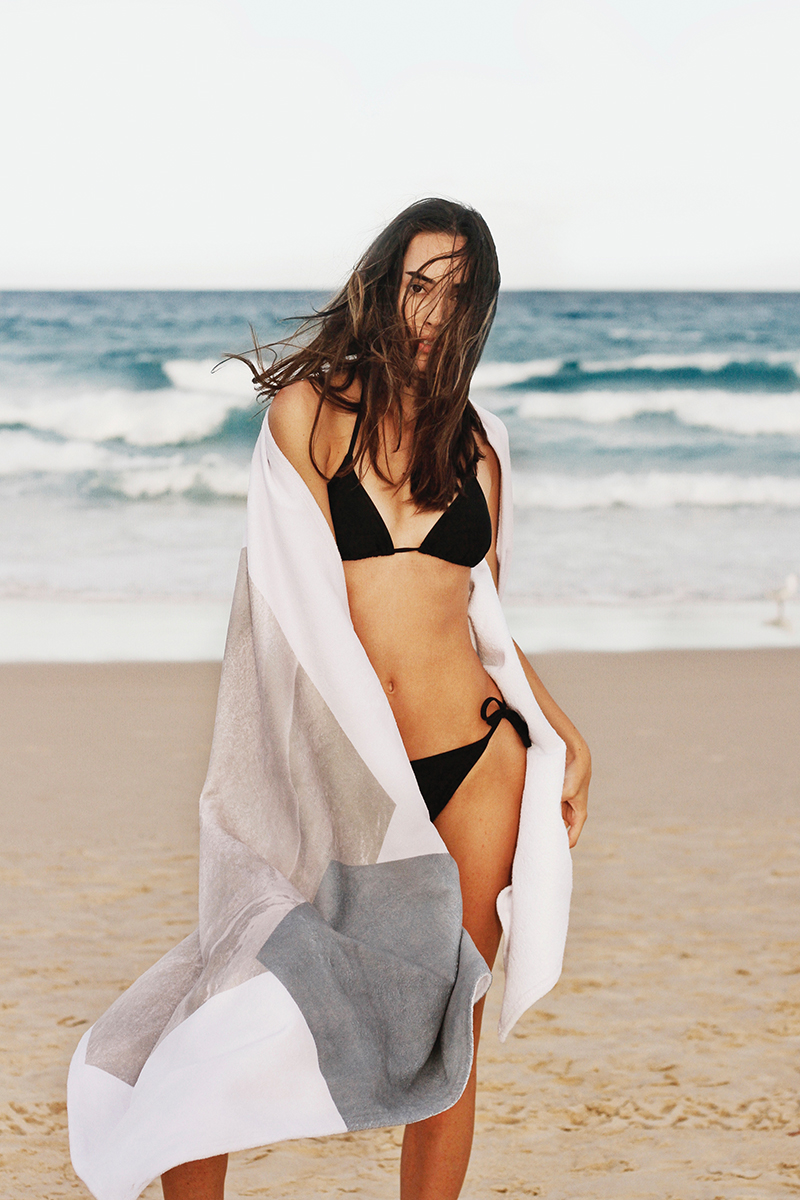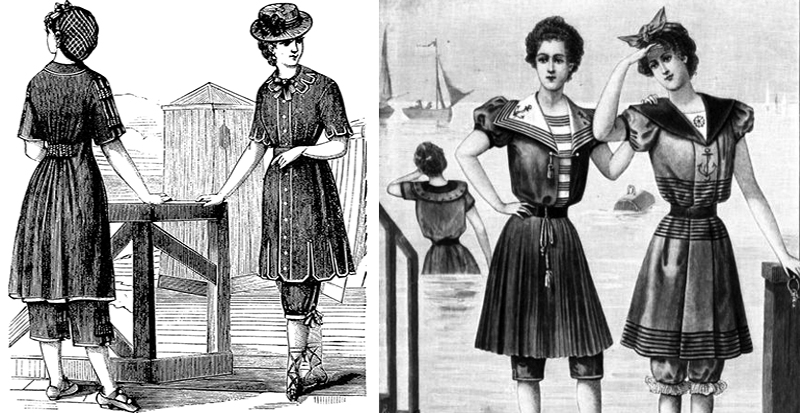Summer is finally here – and that can mean only one thing. Every Brit is getting ready to pack their bags in search of golden beaches and crystal-clear waters. In preparation for this glorious event, women everywhere have spent the last few weeks frantically scouring the high-streets for the swimsuit that will make them look and feel sexy as they lounge on the beach sipping margaritas.

As far as wardrobe staples go, the swimsuit serves a unique purpose – to function well both on land and in water. It is, therefore, not surprising that the evolution of the bathing suit is one of the most monumental in the history of fashion.
It all began with the birthday suit – no, we are not kidding. In the late 1700s, it was common for women to bath nude. It wasn’t until the 18th century that women began covering their bodies when bathing at the spa or beach. The bathing suits of this era where made up of a full-length belted dress – with sleeves and a collar – and bloomers. Heavy materials such as flannel and wool were typically favoured, as they were unlikely to rise and expose a woman’s legs when submerged.
The modesty of the era also meant that women could not just strip down on the beach if they fancied taking a leisurely dip. Instead, they would first change inside a bathing machine. The bathing machine, which much resembles a cabin on wheels, was either pushed or driven out into the shallows by a horse and driver to allow women to bathe relatively unseen.

In 1901, the legal segregation of bathing areas ended and by 1912 women began to compete in swimming sporting events. This welcomed a new era for the women’s bathing suit. Billowy dresses were replaced with fitted one-piece suits, much like the ones designed for men. By the 1920s, women’s swimsuit had become tight-fitting and cut to leave the neck, arms and legs bare. This new design gave the bathing suit a new lease of life in the world of fashion.
The two-piece bikini first became popular in the 1940s. These suits typically featured high-waisted bottoms that covered the navel. It wasn’t until the 1950s that the modern bikini became mainstream, when actress Bridget Bardot wore a floral bikini to the 1953 Cannes Film Festival.
The evolution of the swimsuit has brought us some iconic and timeless trends – the scandalous cut-outs of the 20s, the flattering sweetheart necklines and ruching of the 30s, the high-waisted bottoms of the 40s, the 50s halter neck, and the 80s/90s high-leg. Each of these styles continue to be reimagined each season, providing the women of today with a wide selection of patterns and cuts that suit their individual body shape and help make them feel confident on their summer getaway.